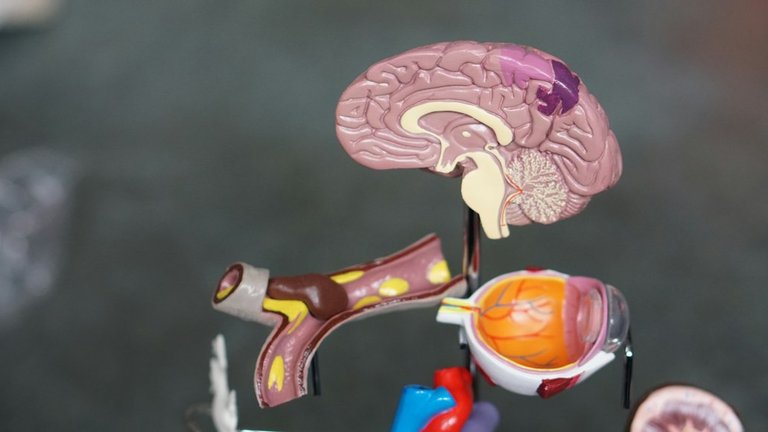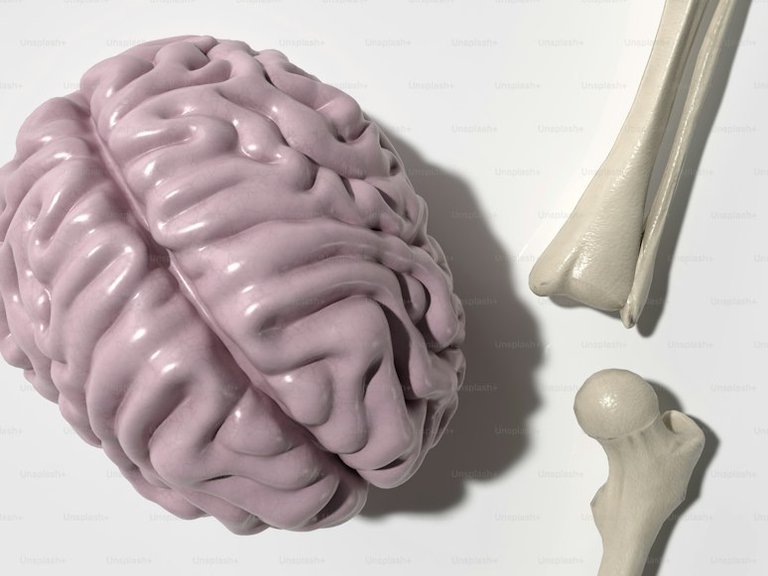The Brains Mysteries: How Lesion affect Reading and Who's really in charge!
Okay, so based on our blog-isode journey so far, we understand that much of our knowledge of human cerebral function comes from the study of lesions(damage of a tissue or organs), and in this context brain lesions.
But you see, just because, a certain part of the brain is damaged, and it causes a problem doesn't tell us how that part was involved in the function we've lost.🤷

Therefore to begin finding an answer, it's important for us to understand what the actual function is. In some cases, like issues in sensory areas leading to vision and hearing problems, it's quite clear. However, in other situations, the explanation is not as straightforward.
One very good example is a famous case reported by the French neurologist Dejerine in 1892. His patient woke up one morning to find out that he could no longer read. He could speak alright, and understand speech as before. In fact, he could also write, but still couldn't read what he had written.
He could still see mostly, because his vision was unaffected with one exception, he could no longer see the right half of his visual field. Because of how the brain's visual pathways are set up, one neurological inference was inescapable:
There had been some serious damage to the visual projection area of the left hemisphere.
Now should we conclude that this region is a "reading center"?
No!
It's highly unlikely to interpret it that way.
To explain this situation, we must first consider what reading is.
You see, many researchers believe that, the written word is a visual transcription of the spoken one. What it means is, a child learns to read by associating certain visual forms with speech sounds and, through them, with meanings. Since the speech sounds and meanings are dealt with in the language areas of the left hemisphere, it would make sense to assume that these areas must participate in the act of reading.
Now, based on this idea, the pictures and words(visual information) need to go to the language areas on the left side(hemisphere) of the brain to make sense of them, basically, to read. But what if the pathway between seeing things and understanding words isn't there anymore?
What could happen in that situation?
After a postmortem examination, Dejerine discovered that his patient suffered such a disconnection. A large portion of his corpus callosum was destroyed, as was the visual projection area of the left hemisphere.
This solves the Puzzle then.
The right visual cortex was not damaged and therefore the patient could see.
The language areas of the left
hemisphere were intact, and so he could speak and comprehend.The motor system was not affected, so he could write.
But the destruction of the corpus callosum(what links both hemispheres of the brain for communication between the left and right to be possible) isolated the visual cortex of the right hemisphere from the language areas of the left.
https://youtube.com/shorts/0kf6OhEGlgM?si=x0KcyvWYfP9_nV0J
So, the person could look at written words, but couldn't understand or read them. This situation is pretty much like what we've talked about before with split-brain patients in a previous blog-isode.
This example also clearly shows that we need to understand both sides of the connection between psychology and anatomy. To understand how the brain supports behavior, like language or memory, we must also understand the behavior itself, not just its connection to brain structure. Psychology and neurophysiology work together. Saying that psychology can't advance without understanding the brain is only half true because finding the physical basis requires knowing what it supports.
Anyways, another problem concerns hierarchical control.
Who really is ultimately incharge?
We have previously seen in another blog-isode that the nervous system is organized along the lines of a hierarchy with higher centers controlling lower centers, which control yet even lower ones.
But where does the Cortex(supposed C.E.O) fit in? Some nineteenth-century neurologists
supposed that some regions of the cortex are at the very top of the hierarchy and
hand down orders to all the rest.
This idea supports our belief that when the brain's outer layer (cortex) is damaged, important functions like language, thinking, memory, and perception are most affected. These are considered the "higher" mental processes that likely control the "lower" ones. However, many present-day neuroscientists don't agree with this conclusion.
Reason is:
The outer layer of the brain (cortex), doesn't oversee a lot of basic functions. For instance, both rats and humans keep eating and searching for food even if their cortex is seriously damaged. The types of food they liked or disliked before the damage will still be the same afterward.
This is not to say that the cortex does not play any role in food seeking (or drinking, or sexual behavior, or any other so-called lower'" functions). But there is no evidence that it governs them.
The most likely idea is that the nervous system isn't arranged in a single order. It's not like a complete monarchy, where the cortex acts as a king ruling everything underneath.
Instead, it is composed of a number of hierarchies whose controls and functions overlap, with some in the cortex and some in subcortical structures.
Instead, it's made up of different levels of control that overlap, some in the cortex, and some in the structures beneath it.
These control levels work together all the time, with one leading at times but not always. It doesn't really make sense to say one of them is the boss. The way the nervous system operates is likely similar to how a complicated society, like ours in the 21st century, functions.
Who's in charge?
As yet, we know too little to be sure of any answer. But the best guess is:
It depends.
The Bus Stops Here for today:
Thank you for joining me in another blog-isode. I hope you enjoyed it as much as I did. I'd be glad to hear your thoughts on this subject or on my blogs. I enjoy doing this, and I want to make sure you enjoy reading. Until tomorrow, stay safe.

References and links:
https://www.researchgate.net/figure/Hierarchy-of-brain-function-The-human-brain-is-organized-from-the-most-simple-eg_fig1_232510107#:~:text=The%20human%20brain%20is%20organized%20from%20the%20most%20simple%20(e.g.,most%20synapses%3A%20frontal%20cortex).
https://pubmed.ncbi.nlm.nih.gov/19076402/
https://my.clevelandclinic.org/health/articles/23073-cerebral-cortex
Yay! 🤗
Your content has been boosted with Ecency Points, by @serenecounsel.
Use Ecency daily to boost your growth on platform!
Congratulations @serenecounsel! You have completed the following achievement on the Hive blockchain And have been rewarded with New badge(s)
Your next target is to reach 2750 upvotes.
You can view your badges on your board and compare yourself to others in the Ranking
If you no longer want to receive notifications, reply to this comment with the word
STOPWow, this is so interesting! As someone who loves psychology and anatomy, I really appreciate the emphasis on understanding both to fully comprehend brain function.
Awesome, I'm glad you did. I've always been fascinated about this field of study since my high school Days. Thanks for reading and leaving an encouraging comment.
Thanks for your contribution to the STEMsocial community. Feel free to join us on discord to get to know the rest of us!
Please consider delegating to the @stemsocial account (85% of the curation rewards are returned).
Thanks for including @stemsocial as a beneficiary, which gives you stronger support.